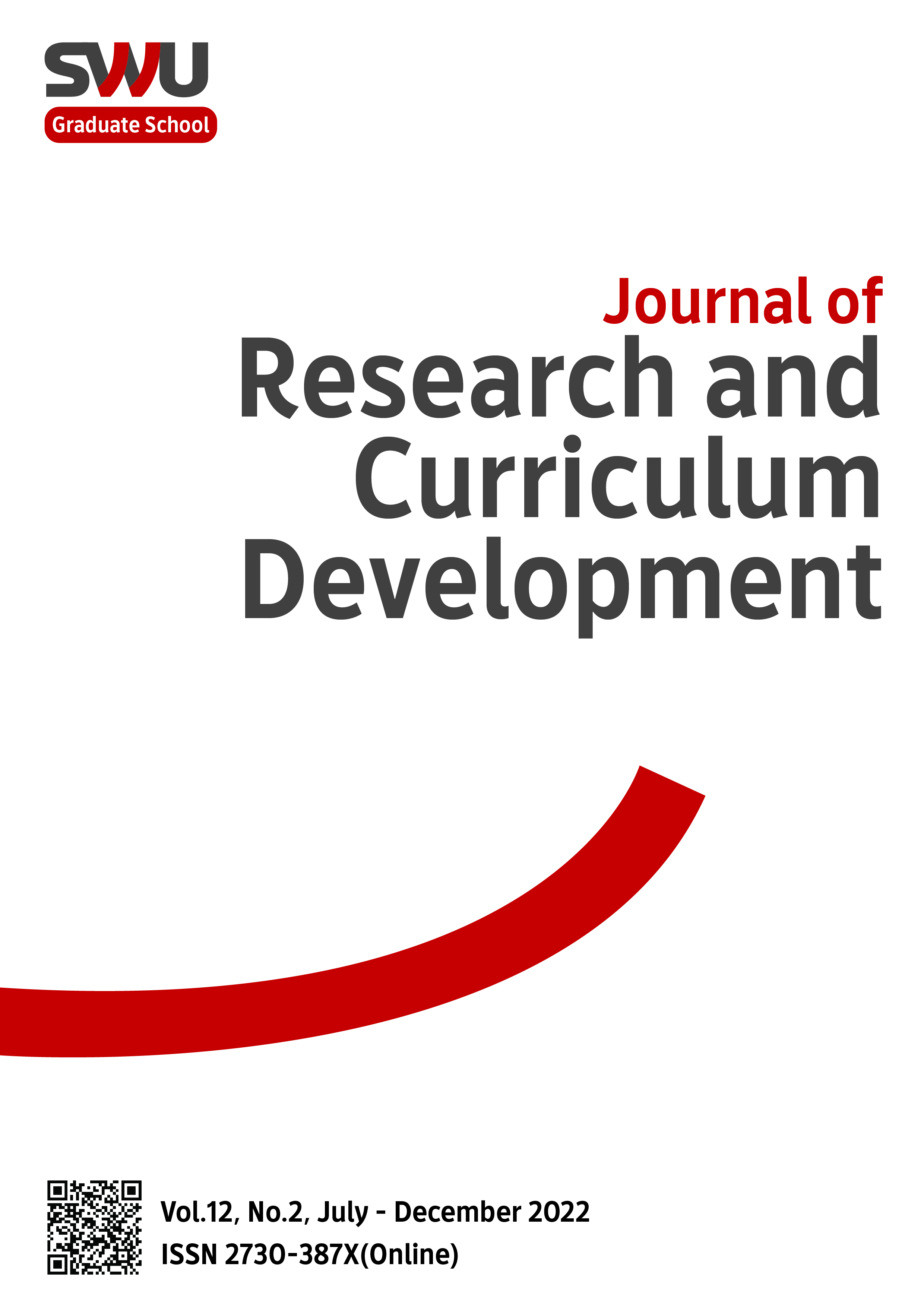The Art of Teaching to Develop Theory of Mind of Autistic Children
Keywords:
autistic children; Theory of Mind, instruction, developmentAbstract
Theory of Mind is the concept contributing to the development of the mind-read ability of autistic children as it is required to allow autistic children to understand themselves and others’ feelings, emotions, and behaviours. This research aims to study how parents teach their autistic children to develop the Theory of Mind and study how autistic children have developed their Theory of Mind (ToM). Five parents of autistic children and a special education teacher were recruited as major key informants. Moreover, five minor key informants, two fathers, one uncle, one aunt, and one babysitter, were included in this study. The major key informants were selected by purposive sampling with four criteria as well as the minor ones were selected by time spent with the autistic children (at least 10 hours a week). The methodology employed was qualitative research (Case Study), and empirical data were collected through in-depth interviews and observation, which required five months to complete. All data were analyzed by content analysis. From the demographic data, it can be concluded that most parents of autistic children were mostly mothers who weren’t hired by any company and could spend the most time with autistic children. The average time taken to socialize autistic individuals was 10.8 hours daily. All major key informants were over 40 years old. The findings are divided into two sections; the process of teaching children with autism of their parents and how autistic children have developed their Theory of Mind (ToM). The first section indicated three factors contributing to the establishment of the approaches the parents used to teach their autistic children, including situations, environments, and attitudes. In addition, the second section illustrated eight steps of how autistic children develop the Theory of Mind, consisting of 1) Observing and Emulating 2) Memorizing and Expressing 3) Exploring different meaning from different people 4) Understanding extended actions 5) Comparing to intimate person 6) Connecting and reasoning 7) Indicating causes and consequences and 8) Pretending to be someone or something. This research is beneficial for several groups, including scholars, educators, special teachers, and parents of autistic children in aspects of further research, public awareness, child development, academic issue, and policy making.
References
Baron-Cohen, S. (1995). Mindblindness: An essay on autism and theory of mind. The MIT Press.
Bernard, J. M. (1997). The discrimination models. In C. E. Watkins, Jr. (Ed.), Handbook of psychotherapy supervision (pp. 310–327). John Wiley & Sons, Inc.
Boyd, B.A. (2002) Examining the relationship between stress and lack of social support in mothers of children with autism. Focus on Autism & Other Developmental Disabilities, 17, 208-215. doi:10.1177/10883576020170040301
Dunst, C. J., & Leet, H. E. (1987). Measuring the adequacy of resources in households with young children. Child: Care, Health and Development, 13(2), 111–125. https://doi.org/10.1111/j.1365-2214.1987.tb00528.x
Dyson, L. L. (1997). Fathers and mothers of school-age children with developmental disabilities: Parental stress, family functioning, and social support. American Journal on Mental Retardation, 102(3), 267–279. https://doi.org/10.1352/0895-8017(1997)102<0267:FAMOSC>2.0.CO;2
Happe, F. (1993). Communicative Competence and Theory of Mind in Autism: A Test of Relevance Theory. Cognition, 48, 101-119. http://dx.doi.org/10.1016/0010-0277(93)90026-R
Hermelin, B. and O’Connor, N. (1970) Psychological Experiments with Autistic Children. Pergamon Press, Oxford, UK.
House, J. & Kahn, R.L. (1985). `Measures and concepts of social support.' In S. Cohen & L. Syme (eds). Social Support and Health. Academic Press: New York.
Howlin, P., Baron-Cohen, S., & Hadwin, J. (1999). Teaching Children with Autism to Mind-Read: A Practical Guide. Chichester: John Wiley & Sons.
Khueanman, I. (2002). Mental Health and Dependent-care Agency Among Mothers of Autistic Children. Chiangmai University.
Prizant, B. M. (2009). Treatment Options and Parent Choice Is ABA the Only Way? Autism Spectrum Quarterly, 28-32.
Tager-Flusberg, H. (2007). Evaluating the theory-of-mind hypothesis of autism. Current Directions in Psychological Science, 16(6), 311–315. https://doi.org/10.1111/j.1467-8721.2007.00527.x
Tungmephon, P. (2005). Social Support, Caregiving Preparedness and Stress among Mothers of Autistic Children. Chiangmai University.
Royal Thai Government Gazette, 2008-02, Vol. 62, No. 2, pp. 73-83
McCroskey, J., & Meezan, W. (1998). Family-centered services: Approaches and effectiveness. The Future of Children, 8(1),54–71.
Ministry of Education. (2008). Basic Education Core Curriculum B.E. 2551 (A.D. 2008). Bangkok: Agricultural Cooperative Federation of Thailand.
Turnbull, Ann, P. and Turnbull, H. R. (1990). Families, Professionals and Exceptionality. A special partnership, Merrill Publishing Company.
Wilson, S., Djukic, A., Shinnar, S., Dharmani, C., Rapin, I. (2003). Clinical characteristics of language regression in children. Developmental Medicine and Child Neurology, 45, 508–514.
Downloads
Published
How to Cite
Issue
Section
License

This work is licensed under a Creative Commons Attribution-NonCommercial-NoDerivatives 4.0 International License.


